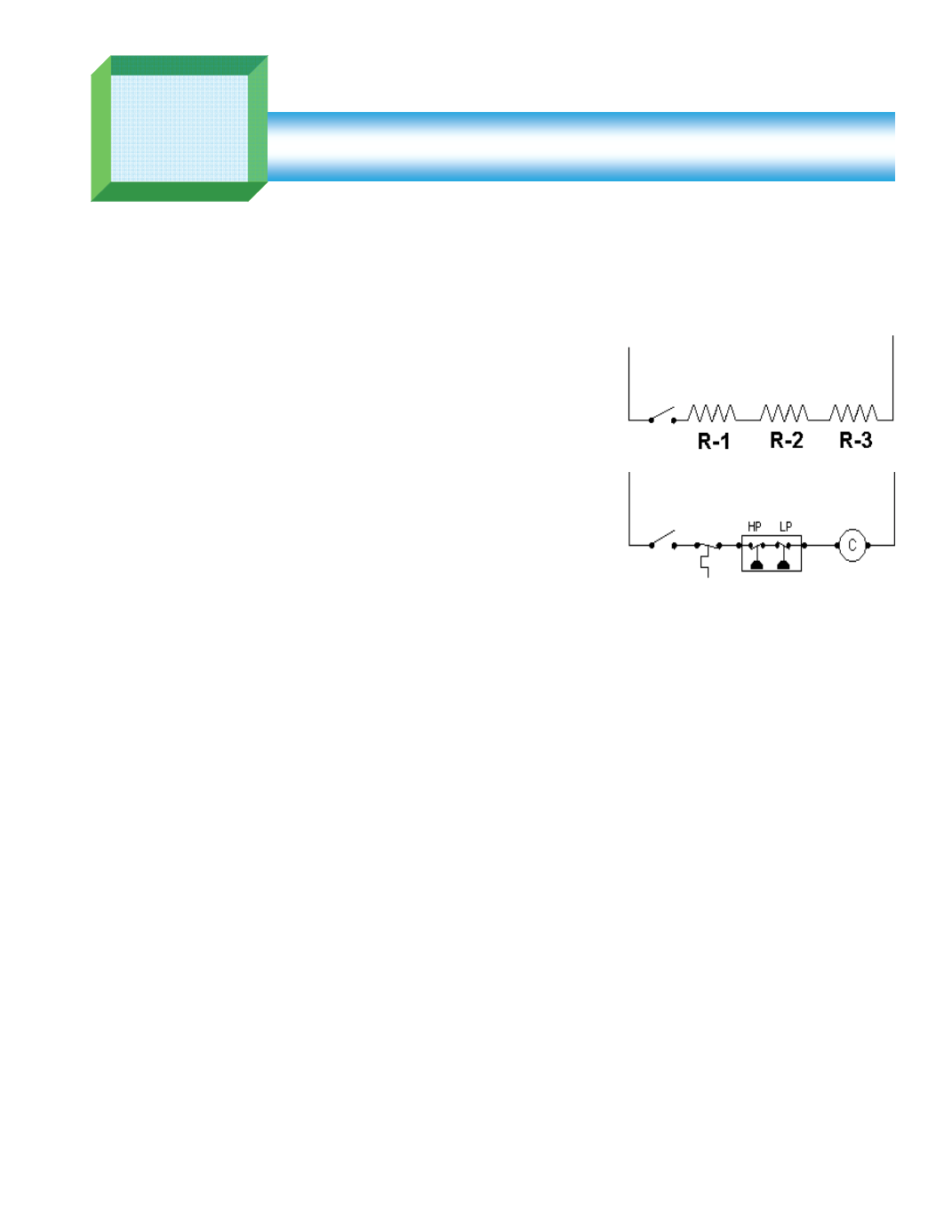

Electrical Theory & Applications for HVACR
Chapter 2: Circuits and Their Components
Page 19
SIMPLE CIRCUIT
A simple circuit contains a power supply and a load. It has one path of electrons that flows to the
load and back to the source. It may or may not contain a switch.
SERIES CIRCUITS
A series circuit has one single path for current flow.
Components in the circuit are arranged so that current must
flow through the first device, then the second, third, and so
on. If the connecƟon is broken or if one device fails, current
flow stops in the enƟre circuit. Voltage is shared (divided) by
all devices in a series circuit. As current flows through loads
wired in series, the voltage drops as each load consumes
power. Switches and contacts are not power‐consuming
devices and should not cause a voltage drop.
There may be several switches in series with a motor or other
device. If any one of the switches opens, current stops.
Total Resistance in a Series Circuit
A series circuit has only one path for current flow. Therefore, total resistance is the sum of all of
resistances in the circuit.
RT = R1 + R2 + R3...
Series Circuit Laws
1. Only one path for current to flow.
2. Current remains constant throughout the circuit.
3. Total resistance is equal to the sum of all resistors in the circuit.
4. Total voltage is equal to the sum of all voltage drops in the circuit.
5. Largest voltage drop always occurs across the highest resistance in the circuit.
PARALLEL CIRCUITS
A parallel circuit has more than one path for current flow. Parallel circuit configuraƟons are used to
connect several loads across the same voltage source. Current flows through each load independent
of the others.
Current flow through each load is not necessarily equal, but voltage across the load is always equal.
2
Circuits and Their Components
Fig. 2‐1: Examples of series circuits










